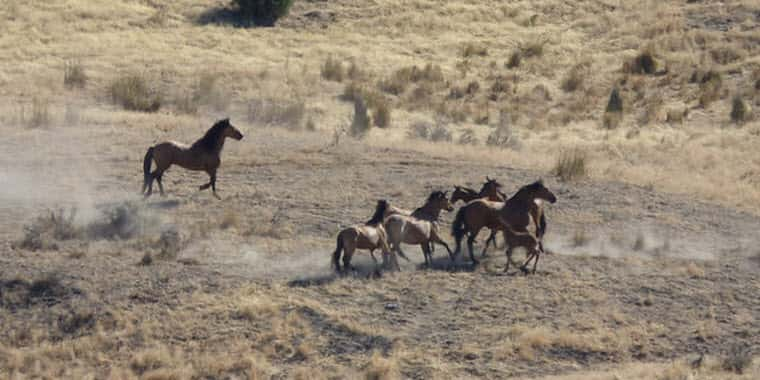Grand Junction, CO— The Bureau of Land Management (BLM) announced several important accomplishments that support the agency’s mission of preserving wild horses and burros on public range lands in an ecologically sustainable way. During Fiscal Year 2020 – which ended Sept. 30, 2020 – the BLM humanely removed 10,139 wild horses and burros from overpopulated Herd Management Areas throughout the West. At the same time, the agency placed 6,162 animals into private care through adoptions and sales. The agency also secured contracts for seven new off-range pastures to provide humane long-term care for up to 5,000 unadopted and unsold wild horses in a cost-efficient free-roaming environment.
“The Trump Administration is pleased to deliver this impressive update showing the BLM’s successes and commitment to managing the Wild Horse and Burro Program,” said Casey Hammond, Principal Deputy Assistant Secretary for Land and Minerals Management. “The continued successful use of incentives is saving taxpayers hundreds of millions of dollars while reducing the overpopulation of wild horses and burros on the range.”
The BLM continued to offer the Adoption Incentive Program (AIP) in Fiscal Year 2020, which is believed to have bolstered performance. The AIP, which was launched by the Trump Administration in 2019, offers qualified adopters $500 within 60 days of adoption and $500 within 60 days of receiving title. With more than 6,160 animals adopted and sold last year, taxpayers saved approximately $154 million that would have been spent on lifetime care for the animals.
Despite the pandemic, through such outreach efforts as the Online Corral adoption/sale platform and partnerships with organizations such as the Mustang Heritage Foundation, the agency took advantage of every safe opportunity to place animals into good homes. As states began to lift COVID-related restrictions, field offices safely resumed operations that allowed even more people to bring home their own wild horse or burro from satellite events around the country.
As of March 1, 2020, the wild horse and burro population on public lands was estimated at more than 95,000, which is more than triple the number of animals the land can sustainably support in conjunction with other legally mandated uses, making targeted removals and successful adoptions and sales essential for enabling the agency to regain proper balance.
Given the extensive overpopulation, wild horses and burros routinely face starvation and death from lack of water. The high number of excess wild horses and burros causes habitat damage that forces animals to leave public lands and travel onto private property or even highways in search of food and water, creating increases in public safety concerns.
Placement of wild horses and burros into private care is critical to the agency’s ability to effectively manage these valued resources as integral parts of America’s public lands. Under a 1971 law, the Wild Free-Roaming Horses and Burros Act, the agency is responsible for preserving and protecting these animals as part of a thriving natural ecological system on public lands. The agency achieves this objective primarily by gathering and removing excess animals from the range and offering them for adoption or purchase at facilities and events around the country.
When the number of animals removed from the range exceeds the number the agency can place through adoption or sale, the remaining animals are held in off-range corrals or contracted pastures at taxpayer expense. Currently there are approximately 52,000 wild horses and burros in off-range corrals and pastures. The cost of providing quality, humane care for these animals runs about $57 million annually.
###
Bureau of Land Management



If the BLM would contact me, I have a cheap, sustainable solution for the wild horses. Please contact me— let me try to help.